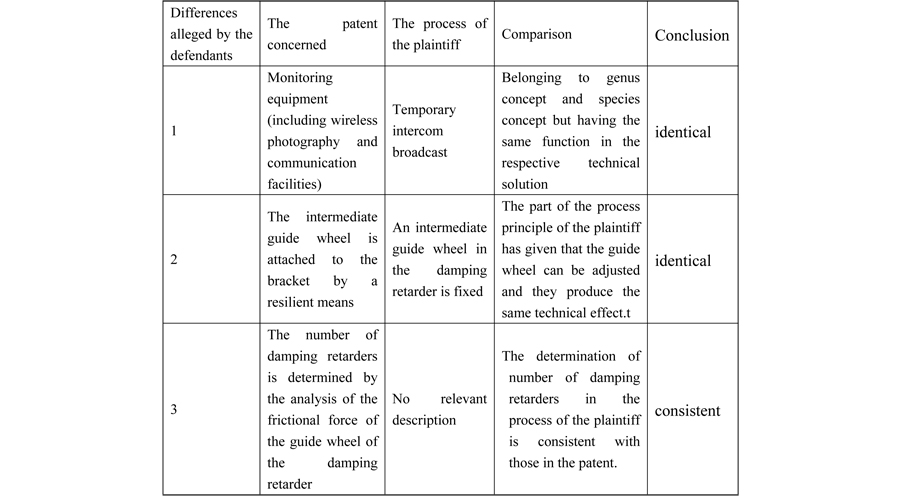
Determination of inventorship is a basis for determining patent relevant right and involves many aspects of patent, such as evaluation of service invention or non-service invention, right of patent application, ownership of patent right, right of obtaining profit/awards distribution. An accomplishment of inventions generally relates to contributions from different people. However, it is not possible that all people relevant to the inventions are inventors. Determination of inventorship is a complex and difficult task.
Definition on “inventor”
Rule 13 of the Implementing Regulations of the Chinese Patent Law —“‘Inventor’ or ‘creator’ referred to in the Patent Law means any person who makes creative contributions to the substantive features of an invention-creation. Any person who, during the course of accomplishing the invention-creation, is responsible only for organizational work, or who only offers facilities for making use of material and technical means, or who only takes part in other auxiliary functions, shall not be considered as inventor or creator”. Based on the above, we may know that we need to firstly determine what the substantive features of an invention are and then determine who is the inventor making creative contributions to the substantive features of an invention.
1. Substantive features of an invention
One of opinions on substantive features of an invention is that substantive features here have the same meaning as that in the definition on “inventiveness” stipulated Article 22, Paragraph 3 of the Patent Law “Inventiveness means that, as compared with the prior art, the invention has prominent substantive features and represents a notable progress, and that the utility model has substantive features and represents progress”. In practice, there are similar opinions in some cases. For example, in the case of (2012)SuiZhongFa-Zhi-Minchuzi-No.10, the court holds an opinion that “the inventor in the Patent Law refers to a person who makes creative contributions to the substantive features of an invention creation; the right of authorship of inventor depends on whether to make creative contributions to the substantive features of an invention-creation; Determination of ‘substantive features’ here shall have the identical meanings to ‘substantive features’ in Article 22.3 of the Patent Law”; In the case of Shanghai No. 1 Intermediate People’s Court(2011) Hu-Yizhong-Minwu(zhi) -Chu-Zi No.1, the court holds that “the so-called substantive features refer to key points of design of invention-creation or key technical features, reflecting technical differences between said invention-creation and the known achievements. It seems to us that the specific definition on substantive features is not completely different. In our opinion, the substantive features here shall be more possible understood as “those that are distinguished from the prior art and are non-obvious to a skilled person in the art”, which is similar to the meaning in the definition of “inventiveness” stipulated Article 22, Paragraph 3 of the Patent Law. In addition, we also noticed that the courts generally use the similar standard and way in “determination of inventiveness” for determining the substantive features in the inventorship.
2.Creative contributions
We do not find the interpretation on “creative contribution” in the Patent Law, the Implementing Regulations of the Patent Law, and the Guidelines for Patent Examination. There is no relevant regulation on whether or not the “creative” therein is identical to the “creative/inventive” in the definition of “inventiveness” stipulated Article 22, Paragraph 3 of the Patent Law, either. One opinion is that their determination relates to different aspects although they are literally similar. The former is to determine who makes creative contributions to the substantive features of the invention when two or more people make contributions to the invention while the latter is that the claimed technical solution in the patent application is compared with the technical solution of the prior art to determine the difference in the way/means of carrying out technical solutions and the difference in technical effect produced.
Another opinion on the “creative contribution” is that it can be referred to the regulation in Article 6 of Interpretation of the Supreme People's Court on Several Issues concerning the Application of Laws in the Trial of Dispute Cases involving Technical Contracts, wherein it stipulates “…when determining the creative contributions, the court shall decompose the composition of the essential technology involved in the technological achievement. The person who proposes the composition of the essential technology and therefore accomplishes the technical solutions shall be the person who makes creative contributions…”.
In the case of Shanghai No. 1 Intermediate People’s Court(2011) Hu-Yizhong-Minwu(zhi) -Chu-Zi No.1), the court gives a general definition that “the so-called creative contribution refers to innovative intellectual work. Therefore, only the person, who makes innovative work for the technical difference from the known achievements in the procedure of invention-creation, is the inventor or designer, and has the right of authorship for the invention-creation”.
Although there is no clear definition on “creative contribution” in the law, it may be concluded that the person who makes creative contributions is one who proposes the substantive features of the invention and therefore accomplishes the technical solutions.
In sum, an inventor is any person who makes creative contributions to the substantive features of an invention-creation. In our opinion, an inventor shall be one who makes creative contributions to the feature of an invention which are distinguished from the prior art and are non-obvious to a skilled person in the art. In practice, we may use the similar standard and means in the inventiveness determination when determining the inventorship。
Case analysis
The following is to attempt to help you better understand the issue of inventorship determination under current patent practice in combination with the analysis of recent cases.
1. Shanghai No. 1 Intermediate People’s Court(2011) Hu-Yizhong-Minwu(zhi) -Chu-Zi No.1 and Shanghai High Court (2013) Hu-Gao-Minsan-Zhong-Zi No.30
In this case, the plaintiff found that the dependant filed a patent application on regulator production process whose technical solution was obtained from the plaintiff, and finally got a patent right. And thus the plaintiff thought that he should be the inventor. However, the dependant held an opinion that he independently developed this patent and the technical solution in the patent was different from those of the plaintiff.
During the investigation, the court noticed on the basis the arguments of the plaintiff and the dependant that the substantive feature of the technical solution of the patent concerned was from the connection way of horn-like cone tube while the technical solution of the plaintiff did not include this connection way. In addition, the novelty of Claim 1-4 and inventiveness of Claim 8 are rejected by the examiner during the prosecution history of the patent and the examiner suggests incorporating Claim 9 into Claim 1. The patentee followed the recommendation and finally got the patent. It shall be noted that the additional technical feature of Claim 9 is just “the connection way of horn-like cone tube”. Based on the above, the court held that the plaintiff did not make a creative contribution to the substantive features of the invention and should not be entitled to an inventor.
2.Guangzhou Intermediate People’s Court(2012)Sui-Zhongfa-Zhi-Ming-Chu -Zi No.1 and Guangdong High Court (2014) Yue-Gaofa-Minsan-Zhong-Zi No.33
In this case, the plaintiff was the previous employee of the defendant 1(previous company of the plaintiff). During the period working in the defendant 1, the plaintiff published an article related to the patent concerned and alleged that the process in his article was the same as the patented process. Therefore, the plaintiff asserted that he should be the inventor of the patent.
The defendant alleged that the process of the plaintiff had been disclosed by prior art and thus it was impossible that the process in the patent could be allowed if said two processes were the same; The patent concerned was a new technical solution based on previous developed by the plaintiff as one of developer; The plaintiff had left the company when the patent application was filed in 2009; The patent included differences at three aspects.
The court held that it should be considered whether or not the patent concerned had substantive features after a comparison with the process of plaintiff when determining whether or not the plaintiff was entitled to an inventorship. If the patent concerned did not have substantive features after a comparison with the process of plaintiff, the defendants 2-9 should be regarded as not making creative contribution to the patent concerned and the plaintiff could be entitled to an inventorship. Otherwise, if the patent concerned had substantive features after a comparison with the process of plaintiff, the plaintiff was not entitled to an inventorship in the case that the plaintiff could not show its creative contribution to the substantive features of the patent concerned.
With respect to the three differences, the court compared the patent concerned with the process of the plaintiff.

Based on the above in combination with the arguments from both sides, the court held that the patent concerned did not have substantive features as compared with the previous process of the plaintiff and thus the plaintiff should be the inventor of the patent concerned.
The dependants were not satisfied with the first instance judgment and appealed to Guangdong High Court for the second instance. During the procedure of the second instance, the dependants filed a request for in invalidation with the Reexamination Board and the patent concerned was invalidated finally. Based on the invalidation fact, the Guangdong High Court revoked the first instance verdict and dismissed the plaintiff's prosecution.
Summary
(1) In general, an inventor shall be one who makes creative contributions to the feature of an invention which are distinguished from the prior art and are non-obvious to a skilled person in the art. In practice, we may use the similar standard and means in the inventiveness determination when determining the inventorship;
(2) To determine who is an inventor, it should be considered all the whole process based on facts in combination with the evidence provided, such as the proposal to the technical program, the creation concept, the implementation and completion of specific embodiments. Based on the above, we shall investigate who makes creative contributions and then determine the inventor;
(3) In practice, courts generally do not doubt whether a patent is invalid in civil litigation but firstly acknowledge and maintain the validity of a patent concerned. That is to say, without the Invalidation Decision issued by the Patent Reexamination Board, the courts will determine the substantive features on the basis of the understanding that a patent is valid. On the other hand, the courts cannot avoid the determination of the substantive features of a patent although the courts can not directly invalidate a patent.



